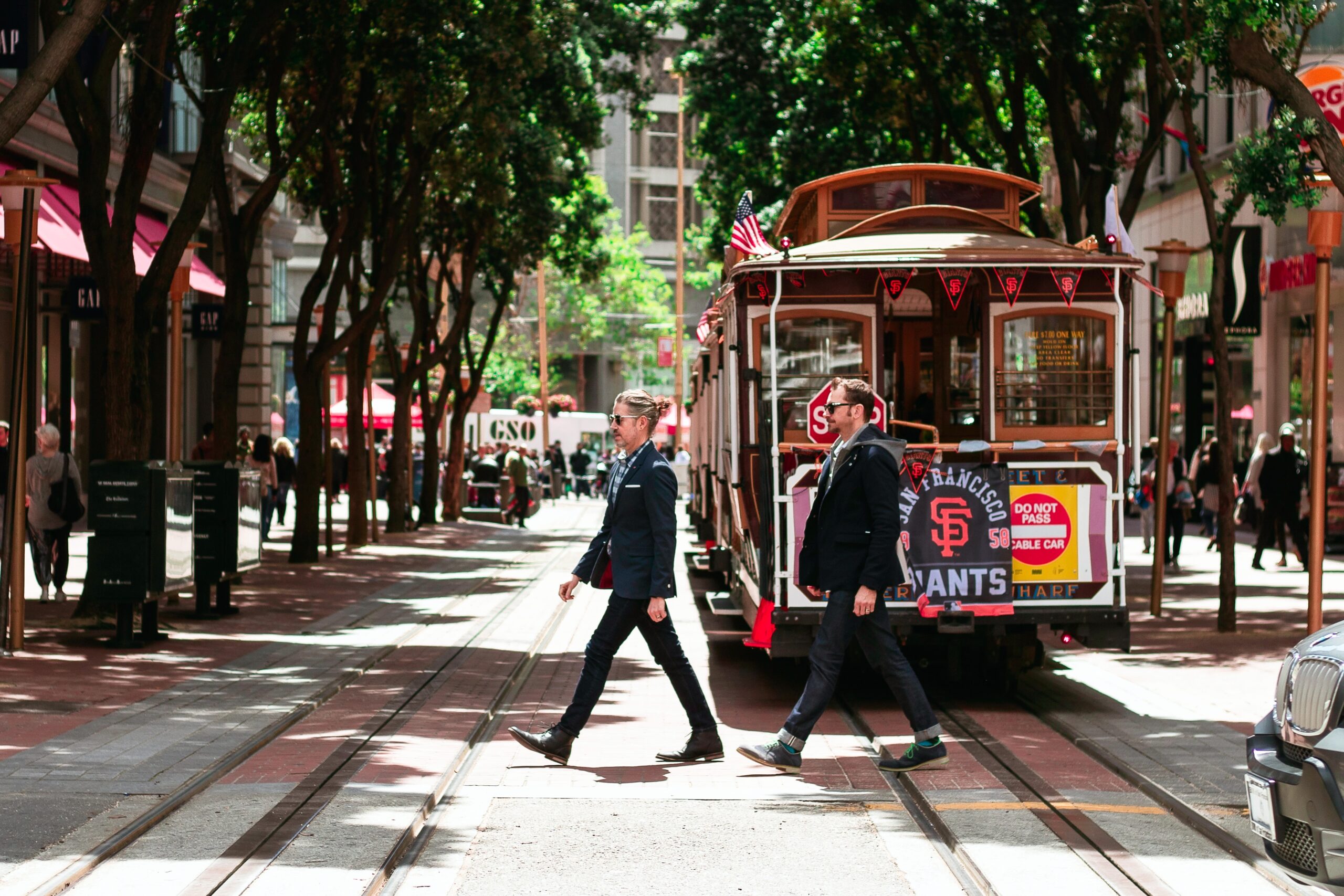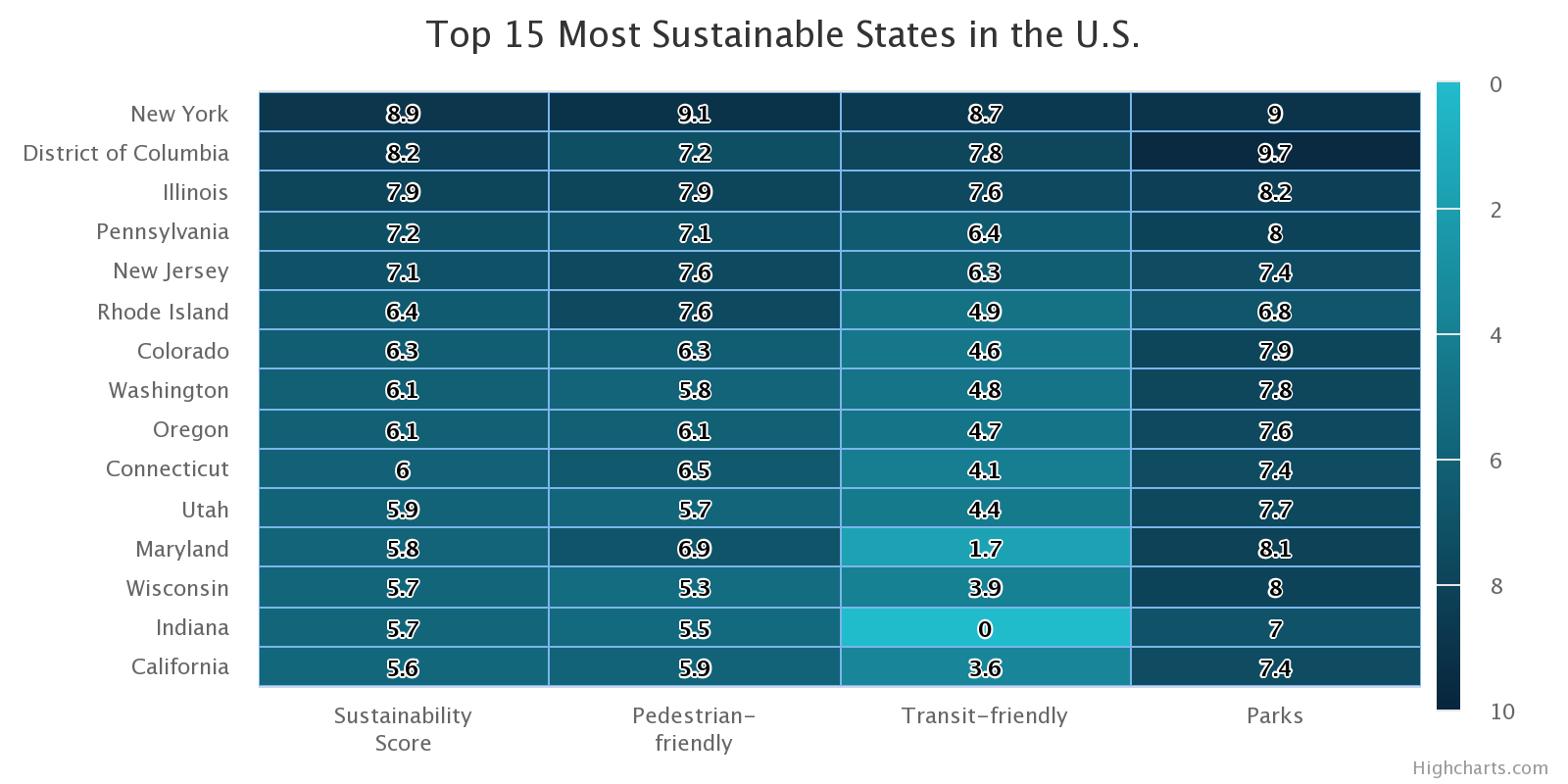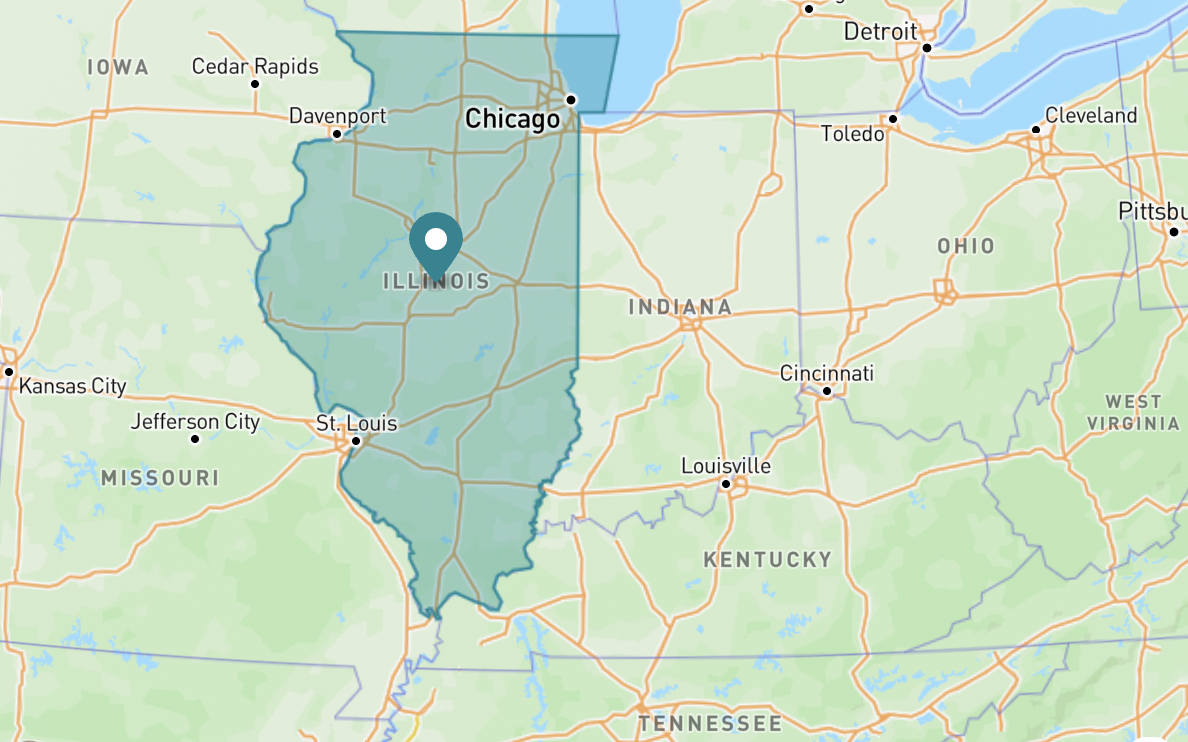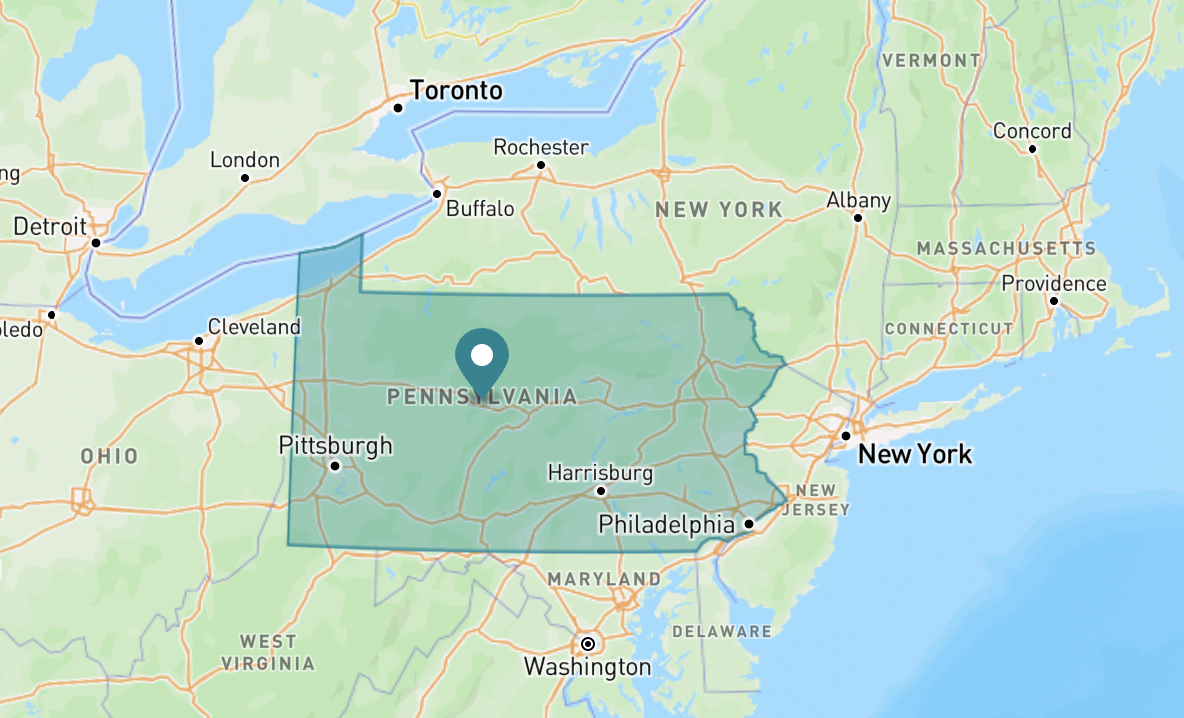Oakley Signs Joins Forces with Local Logic to Bridge the Gap Between Physical Signage and Digital Insights
Partnerships
| 12 Nov 2025

We used our proprietary Location Scores to rank the 50 States in America and the District of Columbia based on the following sustainable characteristics: pedestrian-friendly, transit-friendly, and parks.
Here’s our list of the 15 most sustainable states in the USA:
Logic Local builds location intelligence solutions to make it easier for home buyers and investors to find opportunities that fit their preferences and needs. Using billions of data points, we developed 18 proprietary Location Scores aimed at providing insight at the neighborhood and street level.
These Location Scores allow homebuyers to better understand a location by measuring nearby amenities and mobility patterns. Using our location insights, you can find properties based on specific characteristics, such as proximity to parks or transit access, and make more informed decisions on where to live or build.
Below you’ll find Location Scores for the most sustainable states in the US. We analyzed each state by the following sustainable scores:
Our resulting Sustainability score is a 1-10 average of the Pedestrian-friendly, Transit-friendly, and Parks scores. Then, we ranked each state by this composite score:

Taking into account the policies each state implemented to improve its cities, we explored why New York, the District of Columbia, Illinois, Pennsylvania, and New Jersey earned their spots within the Top 5 of the most sustainable states in America.
Here are some of the sustainable initiatives that each state has undertaken to improve pedestrian, transit, and park access in its cities:

Here are the average scores for the state of New York:
🌎 Overall Sustainability score: 8.9
The state of New York has established the Climate Action Council to develop a Scoping Plan that aims to: reduce greenhouse gas emissions, achieve net-zero emissions, increase renewable energy usage, and ensure climate justice. State officials will use the plan to address issues related to sustainability, including pedestrian and transit-friendly development.
The Prevention Agenda is New York State’s health improvement plan, which serves as a blueprint for state and local action to improve the health and well-being of all New Yorkers and promote health equity in all populations who experience disparities. One of the agenda’s priorities is creating healthier, more walkable communities by promoting practices that encourage physical activity, such as active transportation and access to parks and recreational facilities.
New York has been at the forefront of sustainable and healthy transportation initiatives, with the development of a comprehensive network of bike lanes and the implementation of bike-sharing programs, such as Citibike, in New York City. In 2020, the state added 28 miles of bike lanes in NYC, bringing the total number to over 1,300 miles. In addition, city officials have made changes at many intersections to give pedestrians more time to cross before cars can proceed, which has increased safety for cyclists as well.
View this post on Instagram

Here are the average scores for the District of Columbia:
🌎 Overall Sustainability score: 8.2
The SDC Plan, adopted in 2013 and updated in 2019, is the District of Columbia’s comprehensive strategy to become the healthiest, greenest, and most livable city in the U.S. by 2032. It includes initiatives to promote pedestrian-friendly and transit-friendly communities, such as enhancing walkability, improving public transportation, and creating more green spaces and parks to enhance the quality of life for residents and visitors alike.
The District has implemented TOD policies to encourage the development of pedestrian-friendly, transit-oriented communities. TOD involves planning and designing communities around transit hubs, making it easier for people to access public transportation, walk, or bike instead of relying on cars. The goal is to thereby reduce carbon emissions and promote sustainable mobility.
The District has implemented policies to create and enhance green spaces and parks, providing opportunities for recreational activities, improving air quality, mitigating urban heat island effects, and enhancing the overall livability of the city. These policies include the development of new parks, the revitalization of existing parks, and initiatives to increase tree canopy cover in urban areas.

Here are the average scores for the state of Illinois:
🌎 Overall Sustainability score: 7.9
The Sustainable Investing Act, passed by Illinois in 2020, mandates that all public or government agencies involved in managing public funds develop, publish, and implement sustainable investment policies applicable to the management of all public funds under their control. State cities are encouraged to invest in pedestrian, transit, and park-related initiatives through this policy.
Illinois has invested in active transportation infrastructure, such as bike lanes, multi-use paths, and pedestrian crossings. The state also launched the Illinois Bike Transportation Plan, which aims to make bicycling a safe, convenient, and comfortable transportation option for all Illinois residents.
Illinois has also embraced green economy policies and initiatives, which promote sustainable practices in various sectors, including transportation and urban planning. As part of these policies, the state’s Illinois Transportation Enhancement Program (ITEP) provides funding for community-based projects that expand travel options by supporting bicycle and pedestrian travel, enhancing the safety of walking and biking, and promoting a more multimodal transportation system.

Here are the average scores for the state of Pennsylvania:
🌎 Overall Sustainability score: 7.2
The state has implemented a Complete Streets Policy, which requires that all new transportation projects take into account the needs of all users of the transportation system, including pedestrians, cyclists, and public transportation users. This policy ensures that new transportation infrastructure is designed to promote safe and accessible travel for everyone.
Pennsylvania has several initiatives aimed at improving its transportation infrastructure, such as the Multi-Modal Transportation Fund. The fund provides grants to projects that enhance transportation access, safety, and efficiency, including pedestrian and bicycle infrastructure — ensuring that all residents can benefit from a reliable system of transportation.
This Keystone Recreation, Park, and Conservation Fund provides grants for the development and improvement of parks, recreation areas, forests, trails, and open spaces in Pennsylvania. The fund has been used to create new parks and green spaces, as well as to improve existing ones.

Here are the average scores for the state of New Jersey:
🌎 Overall Sustainability score: 7.1
As part of its comprehensive Pedestrian Safety Initiative, New Jersey has a program called Safe Streets to Transit which aims to improve pedestrian and bicycle access to transit stations. The program provides funding to municipalities to create safer and more convenient pedestrian and bicycle access to transit facilities.
The Green Acres Program was created in 1961 to meet New Jersey’s growing recreation and conservation needs. This program is a land acquisition and park development program that has preserved over a million and a half acres of open space and developed over 700 parks throughout the state. In collaboration with public and private partners, Green Acres has provided hundreds of outdoor recreation facilities throughout the state.
The state also implemented a Transit Village Initiative, which is overseen by the New Jersey Department of Transportation. This initiative aims to reduce traffic congestion and encourage more transit ridership by developing more pedestrian-friendly areas around transit stations. To promote smart growth, the program provides technical assistance and funding to municipalities that are interested in developing a transit village and promoting TOD. There are currently several municipalities in New Jersey that have been designated as Transit Villages, including Pleasantville, Morristown, South Orange, Rutherford, Riverside, Metuchen, and Collingswood, among others.
Our Location Scores are available through Local Content on many of our partner sites and their real estate listings in the United States. When searching for your next home, or a new neighborhood, you can look for specific characteristics on each individual listing to find the perfect place for you.

Local Content by Local Logic
Curious about how other neighborhoods (or cities!) might fare?
Try the Insights Atlas to get in-depth location insights on any neighborhood, city, or address in the US and Canada.